Usuario "cbustillo"
Se han encontrado 159 Coincidencias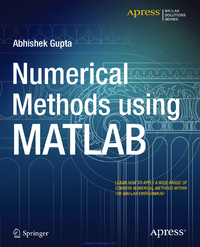
Numerical Methods using MATLAB
Matlab
140 Visitas | 223 Descargas | 2015-04-17 12:11:04 | cbustillo
Numerical Methods with MATLAB provides a highly-practical reference work to assist anyone working with numerical methods. A wide range of techniques are introduced, their merits discussed and fully working MATLAB code samples supplied to demonstrate how they can be coded and applied. Numerical methods have wide applicability across many scientific, mathematical, and engineering disciplines and are most often employed in situations where working out an exact answer to the problem by another method is impractical. Numerical Methods with MATLAB presents each topic in a concise and readable format to help you learn fast and effectively. It is not intended to be a reference work to the conceptual theory that underpins the numerical methods themselves. A wide range of reference works are readily available to supply this information. If, however, you want assistance in applying numerical methods then this is the book for you.
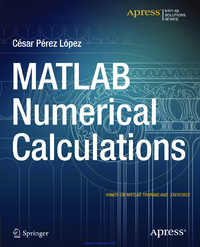
MATLAB Numerical Calculations
Matlab
110 Visitas | 185 Descargas | 2015-04-17 12:12:07 | cbustillo
MATLAB Numerical Calculations focuses on MATLAB capabilities to give you numerical solutions to problems you are likely to encounter in your professional or scholastic life. It introduces you to the MATLAB language with practical hands-on instructions and results, allowing you to quickly achieve your goals. Starting with a look at basic MATLAB functionality with integers, rational numbers and real and complex numbers, and MATLAB's relationship with Maple, you will learn how to solve equations in MATLAB, and how to simplify the results. You will see how MATLAB incorporates vector, matrix and character variables, and functions thereof. MATLAB is a powerful tool used to defined, manipulate and simplify complex algebraic expressions. With MATLAB you can also work with ease in matrix algebra, making use of commands which allow you to find eigenvalues, eigenvectors, determinants, norms and various matrix decompositions, among many other features. Lastly, you will see how you can write scripts and use MATLAB to explore numerical analysis, finding approximations of integrals, derivatives and numerical solutions of differential equations.
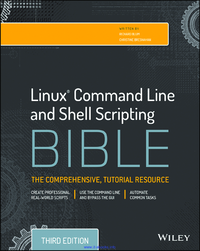
Linux Command Line and Shell Scripting Bible, 3rd Edition
Shell scripting Linux
93 Visitas | 165 Descargas | 2015-04-20 12:44:27 | cbustillo
Linux Command Line and Shell Scripting Bible is your essential Linux guide. With detailed instruction and abundant examples, this book teaches you how to bypass the graphical interface and communicate directly with your computer, saving time and expanding capability. This third edition incorporates thirty pages of new functional examples that are fully updated to align with the latest Linux features. Beginning with command line fundamentals, the book moves into shell scripting and shows you the practical application of commands in automating frequently performed functions. This guide includes useful tutorials, and a desk reference value of numerous examples. The Linux command line allows you to type specific shell commands directly into the system to manipulate files and query system resources. Command line statements can be combined into short programs called shell scripts, a practice increasing in popularity due to its usefulness in automation. This book is a complete guide providing detailed instruction and expert advice working within this aspect of Linux.
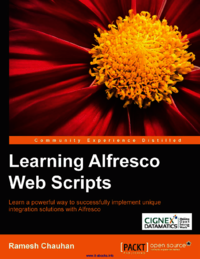
Learning Alfresco Web Scripts
Gestor de Contenidos
34 Visitas | 61 Descargas | 2015-04-22 02:50:47 | cbustillo
Alfresco web scripts is a key feature of the Alfresco enterprise content management system that enables other applications to interact with the Alfresco repository in a secure way. This book will help you understand everything you need to know about web scripts so that you can practically apply them to your own projects. You will begin by learning the basics of Alfresco web scripts, giving you a clear idea about how web scripts are a useful solution to your business problems. Moving on, you will delve into the powerful web script framework and then get a complete walk-through of all the components required to build web scripts. Later in this book, you will discover various ways to execute web scripts. You will learn about useful JavaScript APIs in Alfresco that you can leverage when building business solutions with web scripts.
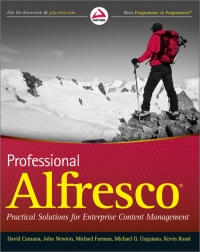
Professional Alfresco: Practical Solutions for Enterprise Content Management
Gestor de Documentos
39 Visitas | 72 Descargas | 2015-04-22 02:53:11 | cbustillo
Alfresco is considered the leading open source solution for Web and Content Management. What makes Alfresco unique is its services, which can be easily extended with web scripts via RESTful services. Written by an author team that includes the chief architect and the founder of Alfresco, this comprehensive guide provides in-depth coverage of the Alfresco architecture and services and shows how to extend them through Web scripts to meet real business needs.
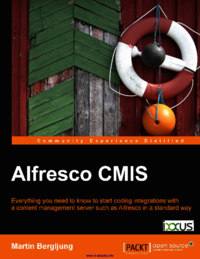
Alfresco CMIS
Gestor de contenidos
40 Visitas | 80 Descargas | 2015-04-22 18:03:57 | cbustillo
Content Management Servers (CMS) have been around for a very long time, both proprietary and open source ones, but there has not been a standard way of talking to them until recently. The Content Management Interoperability Services (CMIS) standard provides both an application programming interface and a search language (based on SQL-92). Alfresco CMIS implementation is the basis for many existing CMIS applications, and you can use CMIS too to integrate your application with Alfresco. Alfresco CMIS is a practical, hands-on guide that provides you with a number of clear step-by-step exercises that will help you take advantage of the real power of CMIS, and give you a good foundation in using it via HTTP/XML, Java, or scripting.It starts off with an introduction to the CMIS standard, in order to update you on the service API, object model, and query language.
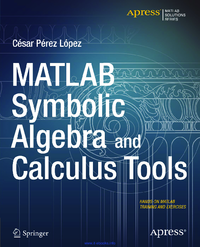
MATLAB Symbolic Algebra and Calculus Tools
MATLAB
108 Visitas | 188 Descargas | 2015-04-23 12:56:52 | cbustillo
MATLAB is a high-level language and environment for numerical computation, visualization, and programming. Using MATLAB, you can analyze data, develop algorithms, and create models and applications. The language, tools, and built-in math functions enable you to explore multiple approaches and reach a solution faster than with spreadsheets or traditional programming languages, such as C/C++ or Java. MATLAB Symbolic Algebra and Calculus Tools introduces you to the MATLAB language with practical hands-on instructions and results, allowing you to quickly achieve your goals. Starting with a look at symbolic variables and functions, you will learn how to solve equations in MATLAB, both symbolically and numerically, and how to simplify the results. Extensive coverage of polynomial solutions, inequalities and systems of equations are covered in detail. You will see how MATLAB incorporates vector, matrix and character variables, and functions thereof. MATLAB is a powerful symbolic manipulator which enables you to factorize, expand and simplify complex algebraic expressions over all common fields (including over finite fields and algebraic field extensions of the rational numbers).
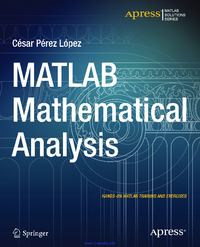
MATLAB Mathematical Analysis
Matlab
122 Visitas | 188 Descargas | 2015-04-23 12:58:47 | cbustillo
MATLAB Mathematical Analysis is a reference book that presents the techniques of mathematical analysis through examples and exercises resolved with MATLAB software. The purpose is to give you examples of the mathematical analysis functions offered by MATLAB so that you can use them in your daily work regardless of the application. The book supposes proper training in the mathematics and so presents the basic knowledge required to be able to use MATLAB for calculational or symbolic solutions to your problems for a vast amount of MATLAB functions. The book begins by introducing the reader to the use of numbers, operators, variables and functions in the MATLAB environment. Then it delves into working with complex variables. A large section is devoted to working with and developing graphical representations of curves, surfaces and volumes. MATLAB functions allow working with two-dimensional and three-dimensional graphics, statistical graphs, curves and surfaces in explicit, implicit, parametric and polar coordinates. Additional work implements twisted curves, surfaces, meshes, contours, volumes and graphical interpolation.
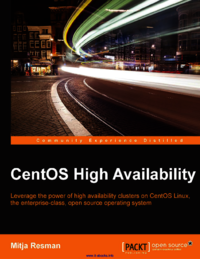
CentOS High Availability
Linux
29 Visitas | 59 Descargas | 2015-05-27 01:03:08 | cbustillo
The high performance and stability of CentOS Linux are the key factors that make CentOS Linux the right Linux distribution to build high availability solutions on. This book introduces you to high availability before briefly walking you through the cluster stack and its layers. The book is then divided into two parts, part A and part B, based on CentOS versions 6 and 7 respectively. Each part begins with the installation and configuration of the Corosync cluster messaging software with CMAN or with the Pacemaker cluster resource management software. You will also be introduced to cluster service configuration and cluster service management before you configure fencing or STONITH on CentOS 6 and CentOS 7. By the end of this book, you will have the skills required to independently design, implement, and maintain a CentOS high availability multinode cluster environment.
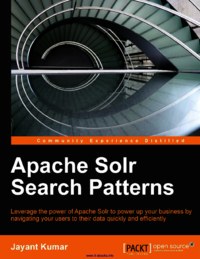
Apache Solr Search Patterns
Search Engine
39 Visitas | 86 Descargas | 2015-05-27 01:04:57 | cbustillo
Apache Solr is an open source search platform built on a Java library called Lucene. It serves as a search platform for many websites, as it has the capability of indexing and searching multiple websites to fetch desired results. We begin with a brief introduction of analyzers and tokenizers to understand the challenges associated with implementing large-scale indexing and multilingual search functionality. We then move on to working with custom queries and understanding how filters work internally. While doing so, we also create our own query language or Solr plugin that does proximity searches. Furthermore, we discuss how Solr can be used for real-time analytics and tackle problems faced during its implementation in e-commerce search. We then dive deep into the spatial features such as indexing strategies and search/filtering strategies for a spatial search. We also do an in-depth analysis of problems faced in an ad serving platform and how Solr can be used to solve these problems.
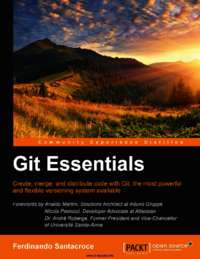
Git Essentials
Control de versiones
84 Visitas | 180 Descargas | 2015-05-27 01:06:23 | cbustillo
Since its inception, Git has attracted skilled developers due to its robust, powerful, and reliable features. Its incredibly fast branching ability transformed a piece of code from a niche tool for former Linux Kernel developers into a mainstream distributed versioning system. Like most powerful tools, Git can be hard to approach since it has a lot of commands, subcommands, and options that easily confuse newcomers. The main purpose of Git Essentials is to help you overcome this fear and become adept at all basic tasks in Git. This book starts with an introduction to version control systems, and after this you'll delve deeply into the essentials of Git. This serves as a primer for the topics to follow such as branching and merging, creating and managing a GitHub personal repository, and fork and pull requests. You will then learn the art of cherry-picking, taking only commits you like, followed by Git blame. Finally, you'll learn how to migrate from SVN using Git tools or TortoiseGit and migrate from other VCSs, concluding with a collection of resources, links, and appendices.
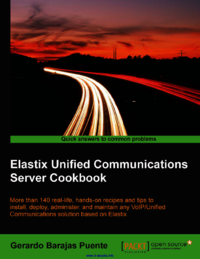
Elastix Unified Communications Server Cookbook
Elastix
36 Visitas | 69 Descargas | 2015-06-03 19:03:58 | cbustillo
Elastix brings together the most useful tools and features from the Unified Communications and Open Source worlds: IP-PBX, Chat, Call Center, Multisite, Video, and so on, in a modular way. Beginning with installation and gaining an in-depth understanding of the internal workings of Elastix, you will soon dive into the core features of Elastix and VoIP and Unified Communications to enable a full cost-effective Unified Communications server solution. You will explore the configuration of IP-BPX features, control call routes and destinations, and troubleshoot the unified communications software. Finish by going that extra mile and securing your server and implement advanced dialplan functions. Through this step-by-step guide you will get to grips with VoIP and Unified Communications with Elastix and dive into practical tips to install, deploy, and maintain your own solutions.
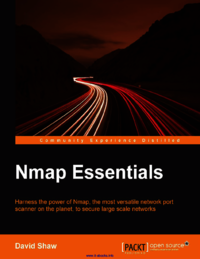
Nmap Essentials
Networking
64 Visitas | 119 Descargas | 2015-09-07 20:41:16 | cbustillo
Nmap is an extremely powerful network port scanner used to identify hosts on a network. Nmap is free, flexible, powerful, and easy to implement, which makes it a very convenient utility. This book demonstrates how to run basic and advanced scans, optimizing them to perform well in a variety of environments. Starting with an overview of Nmap, the reader will be guided through installation on popular operating systems. The book then explains how to use Nmap to run basic and advanced scans in addition to using the Nmap Scripting Engine (NSE). All this helps with optimizing Nmap performance in a variety of environments, eventually enabling the reader to integrate with other Nmap tools such as Nessus, Nikto, Burp Suite, and NSE versus NASL scanning. By the end of the book, the reader will have gained essential insights into network security analysis.
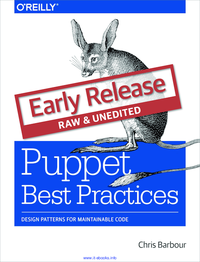
Puppet Best Practices
Instalaciones desatendidas
35 Visitas | 57 Descargas | 2015-09-07 20:47:54 | cbustillo
If you're already up to speed on Puppet and know how to write a basic module, this practical book takes you a critical step further with best practices for building out your Puppet infrastructure. You'll learn how to avoid pitfalls that often leave many teams struggling to maintain what they already have. Ideal for DevOps engineers - and written to cover the upcoming Puppet 4 release - this book shows you how best to deploy Puppet with long-term maintenance and future growth in mind. This book clearly picks up where other Puppet resources leave off.
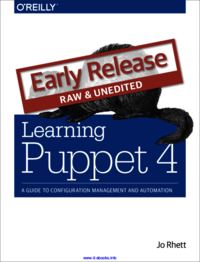
Learning Puppet 4
Instalaciones desatendidas
33 Visitas | 59 Descargas | 2015-09-07 21:03:49 | cbustillo
With this practical book, you'll not only come to understand the specifics of the popular Puppet configuration management tool, but you'll also learn important configuration management concepts and various deployment methodologies. It's ideal for system administrators, developers, and anyone else interested in ensuring that their application deployments go smoothly.
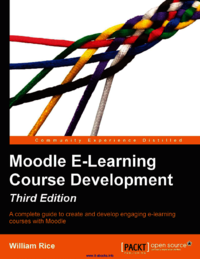
Moodle E-Learning Course Development, 3rd Edition
elearning
50 Visitas | 91 Descargas | 2015-09-16 03:38:52 | cbustillo
Moodle is the leading open source e-learning management system. Using Moodle, teachers and professors can easily construct richly-textured web-based courses. A course can consist of a number of lessons, with each lesson including reading materials; activities such as quizzes, tests, surveys, and projects; and social elements that encourage interaction and group work between students. Packed with clear step-by-step instructions, plenty of screenshots, and thorough explanations, this book guides you through the many features and options that you have to choose from when using Moodle 2.8. Throughout this book, you will follow an example course that will help you to explore the sort of decisions, design considerations, and thought processes that goes into developing a successful course.
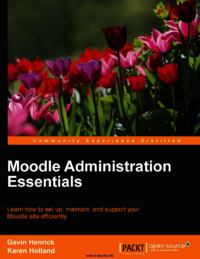
Moodle Administration Essentials
elearning
46 Visitas | 86 Descargas | 2015-09-18 01:03:01 | cbustillo
This book begins with a brief look at Moodle's background and an examination of its architectural structure and LAMP architecture. You'll learn to create user accounts and understand the methods of authentication based on manual accounts and e-mail-based self-registrations. You'll then develop the Moodle site structure and course set up, and discover how to edit it through a sample faculty site. Next, you'll configure two of the standard themes in Moodle and apply them to organizational branding. You'll also explore how plugins are configured and installed, and learn about backing up, resetting, and restoring Moodle courses. Finally, you'll learn Moodle's security options, along with performance testing, and how to use the built-in Moodle performance testing script.
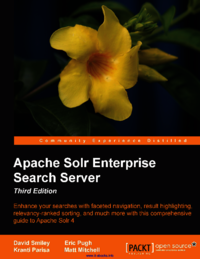
Apache Solr Enterprise Search Server, 3rd Edition
Apache Solr
42 Visitas | 79 Descargas | 2015-09-18 01:04:34 | cbustillo
Solr is a widely popular open source enterprise search server that delivers powerful search and faceted navigation features—features that are elusive with databases. Solr supports complex search criteria, faceting, result highlighting, query-completion, query spell-checking, relevancy tuning, geospatial searches, and much more. This book is a comprehensive resource for just about everything Solr has to offer, and it will take you from first exposure to development and deployment in no time. Even if you wish to use Solr 5, you should find the information to be just as applicable due to Solr's high regard for backward compatibility. The book includes some useful information specific to Solr 5.
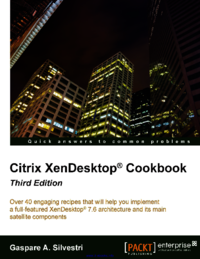
Citrix XenDesktop Cookbook, 3rd Edition
XenDesktop
31 Visitas | 82 Descargas | 2015-09-18 01:06:00 | cbustillo
In the era of Bring Your Own Device (BYOD) and consecration of the mobile devices, Citrix has strengthened its position in this market, powering its desktop and application virtualization platforms, integrating the ability to publish virtual and physical desktops with the capability to assign applications and contents in a secure manner on any device, anywhere, more than previous versions. The XenDesktop 7.6 version is a more integrated platform, which permits the use and interaction with mobility and cloud platforms leaders in the market. This book will help you understand how to implement, configure, and optimize migration from a physical to a VDI architecture, moving from a standard application approach to a centralized and more secure way to assign and release resources to the end users.
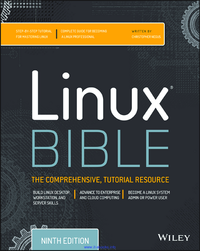
Linux Bible, 9th Edition
Linux
149 Visitas | 275 Descargas | 2015-09-18 01:07:57 | cbustillo
Linux Bible, 9th Edition is the ultimate hands-on Linux user guide, whether you're a true beginner or a more advanced user navigating recent changes. This updated ninth edition covers the latest versions of Red Hat Enterprise Linux 7 (RHEL 7), Fedora 21, and Ubuntu 14.04 LTS, and includes new information on cloud computing and development with guidance on Openstack and Cloudforms. With a focus on RHEL 7, this practical guide gets you up to speed quickly on the new enhancements for enterprise-quality file systems, the new boot process and services management, firewalld, and the GNOME 3 desktop. Written by a Red Hat expert, this book provides the clear explanations and step-by-step instructions that demystify Linux and bring the new features seamlessly into your workflow. This useful guide assumes a base of little or no Linux knowledge, and takes you step by step through what you need to know to get the job done.
Contribuir
Usted puede contribuir con Libros UCLV, es importante para nosotros su aporte..
Contribuir